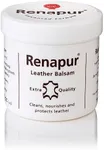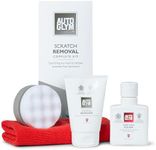Buying Guide for the Best Car Polishs
Choosing the right car polish can make a significant difference in maintaining the appearance and longevity of your vehicle's paint. Car polish is used to remove minor scratches, swirls, and oxidation from the car's surface, enhancing its shine and smoothness. When selecting a car polish, it's important to consider the type of finish you want, the condition of your car's paint, and how much effort you're willing to put into the polishing process. Understanding the key specifications of car polishes will help you make an informed decision that suits your needs and preferences.AbrasivenessAbrasiveness refers to the level of cutting power a polish has, which determines how effectively it can remove imperfections from the car's paint. This is important because using a polish with the right level of abrasiveness can help you achieve the desired finish without damaging the paint. Abrasiveness is often categorized into light, medium, and heavy. Light abrasives are suitable for minor imperfections and regular maintenance, medium abrasives are for moderate scratches and swirls, and heavy abrasives are for significant paint correction. Choose a polish based on the severity of the imperfections on your car's paint.
Type of PolishCar polishes come in different types, such as liquid, cream, and paste. The type of polish affects the ease of application and the results you can achieve. Liquid polishes are easy to apply and remove, making them ideal for beginners or quick touch-ups. Cream polishes offer a balance between ease of use and effectiveness, suitable for most users. Paste polishes are more labor-intensive but can provide a deeper shine and longer-lasting protection. Consider your experience level and the amount of time you want to spend polishing when choosing the type of polish.
Application MethodThe application method refers to how the polish is applied to the car's surface, which can be done by hand or with a machine. This is important because it affects the effort required and the results you can achieve. Hand application is more accessible and safer for beginners, allowing for more control over the process. Machine application, using a dual-action or rotary polisher, can provide faster and more consistent results, especially for larger areas or more severe imperfections. Choose the application method based on your comfort level and the condition of your car's paint.
FinishThe finish refers to the final appearance of the car's paint after polishing, which can range from a high gloss to a more subtle shine. This is important because it determines the aesthetic appeal of your vehicle. High-gloss finishes are popular for their mirror-like shine and are often desired for show cars or special occasions. A more subtle shine may be preferred for everyday use, providing a clean and well-maintained look without being overly reflective. Consider the look you want to achieve and how often you plan to polish your car when selecting a polish for its finish.
ProtectionSome car polishes also offer protective properties, such as UV protection or water repellency, which can help preserve the paint's condition over time. This is important because it adds an extra layer of defense against environmental factors that can damage the paint. Polishes with added protection are ideal for those who want to minimize maintenance and keep their car looking good for longer periods. If you live in an area with harsh weather conditions or park your car outdoors frequently, consider a polish that offers additional protective benefits.
















